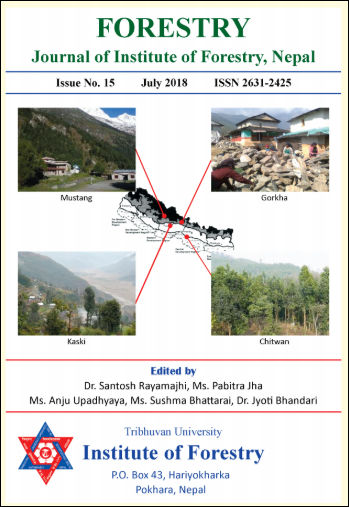Devastating Monsoon: Water Induced Disaster Management Practices in Nepal
DOI:
https://doi.org/10.3126/forestry.v15i0.24921Keywords:
flood, landslide, early warning system, Government policiesAbstract
Nepal is prone to a variety of recurring natural disasters such as floods, landslides, snow avalanches, thunderstorms, drought, earth quake and epidemics. In particular, floods, landslides, hailstorms and drought are almost regular phenomena. This paper has focused mainly on water induced disaster (Monsoon) prepared through review of documents, consultation with related line agencies and field level interaction with affected communities. The paper also seeks to explore and document the major disasters and their impacts in Nepal. It discusses policy and program, institutional arrangement and activities related to the disaster management as well as identification of gaps in the policy and program. Nepal has attempted to manage the prevalence of these hazards and their associated disasters through both informal civic involvement and formal government instruments. A legal and policy environment to deal with disasters has existed in one or the other form in Nepal since 1982, and these have been reviewed. Study showed that disaster management activities only found initial response rather post disaster program. However, findings of the previous and present programs and activities on disaster management have not addressed effectively to the vulnerable people and to reduce the impact from disasters at the local level. It is suggested that disaster management policy and program should be integrated and mainstreamed in development agenda.
Downloads
Downloads
Published
How to Cite
Issue
Section
License
© Tribhuvan University, Institute of Forestry




